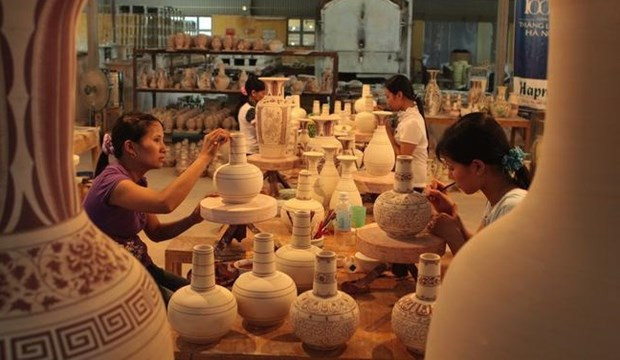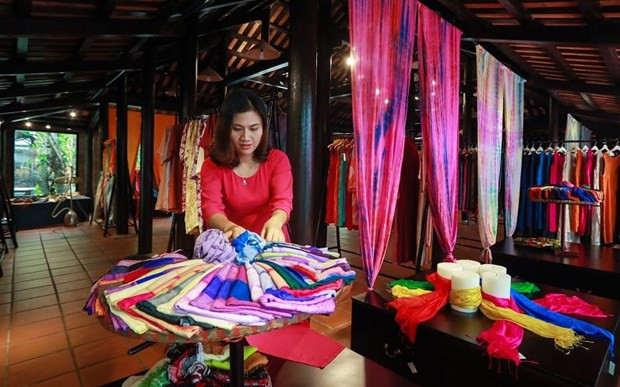
A pottery workshop in Hoi An (Photo: baovanhoa.vn)
Covering 60 sq.km. and having a population of less than 150,000, Hoi An has long been known for its ancient quarters, a world heritage site, with a typical architectural heritage complex.
Vice Chairman of the municipal People’s Committee Nguyen Van Lanh told the Tuoi tre (Youth) daily that selecting the field of craft and folk arts to build the dossier, Hoi An hopes to fully capitalise on its heritage that has been upheld for more than 400 years.
Hoi An is home to a large number of traditional craft villages, including more than 100 in its ancient quarters alone such as silk and leather product making, tailoring, embroidery, woodcarving, and pottery. It also boasts rich architectural heritage with a complex of century-old houses while nurturing many folk arts such as “bai choi” and “ba trao” singing.
Lanh said Hoi An has long been a role model in recovering and tapping into the values of craft villages and folk arts. Here, artisans, craftsmen, and any who have ideas can freely make creations.

Silk items of a craft village in Hoi An on display (Photo: baoquangnam.vn)
The development and maintenance of cultural values and craft villages throughout history have shown that local residents in the lower Thu Bon River basin have managed to adapt to different contexts, and that is the most wonderful creation, he opined.Thanks to heritage tourism, Hoi An has revitalised many craft villages and folk arts. Given UNESCO standards for a creative city, it has to prove that its products of creativity can survive and develop on their own without dependence on tourism.
This is a big challenge, but the city can overcome thanks to its integrating and adapting capability, according to the official.
Apart from Hoi An, Da Lat city in the Central Highlands province of Lam Dong is also seeking membership of the UNESCO Creative Cities Network in the field of music.
In Vietnam, Hanoi was the first to join this network, in 2019.
UNESCO launched the network in 2004 to promote cooperation among cities that recognise creativity as a significant factor of their development. The network recognises seven factors – craft and folk arts, media, film, design, gastronomy, literature, and music – as creative fields. As of 2023, 301 cities around the world have become its members./. VNA